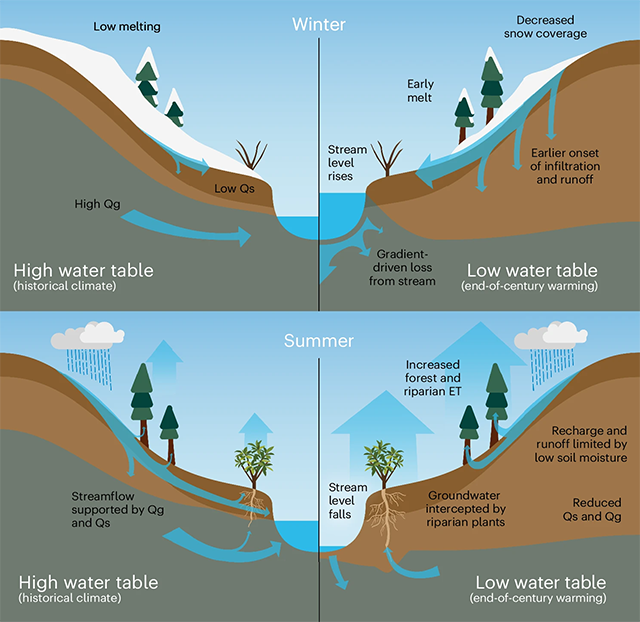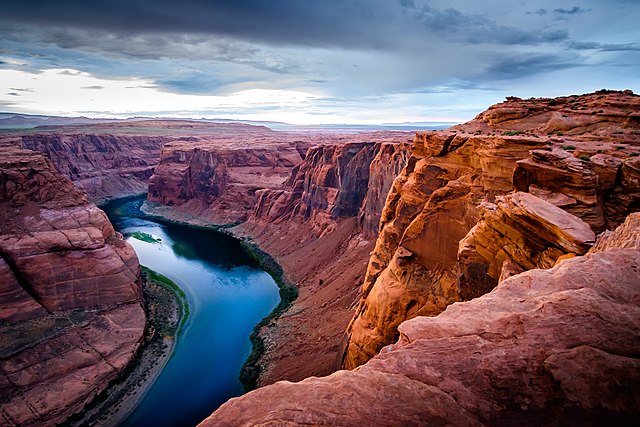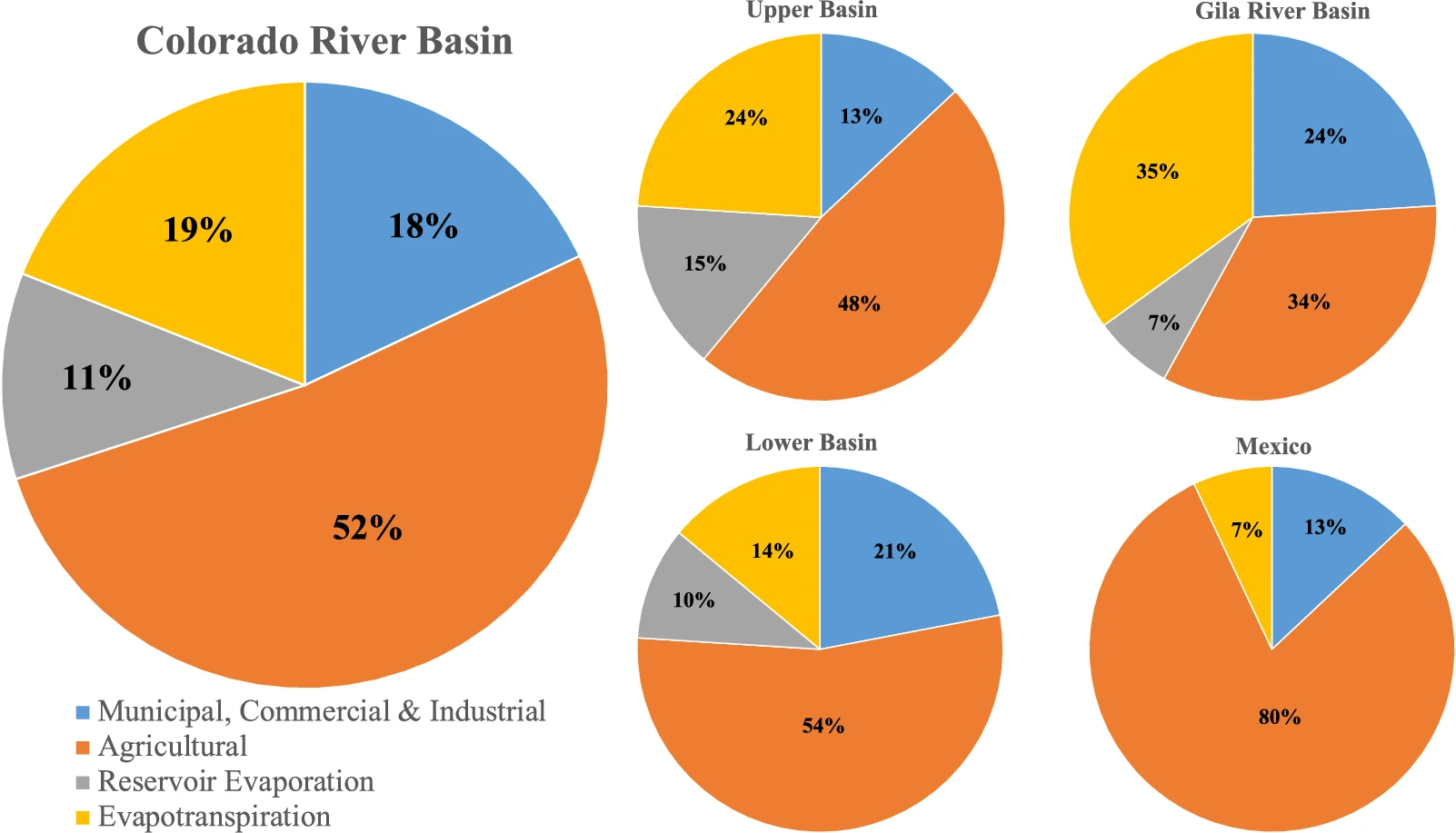
The seasonal effects of increasing temperature on streamflow declines include complex exchanges between surface and groundwater that need to be explicitly modelled to avoid underestimating streamflow losses given a warmer future climate. *See notes below source for additional details.
The Hidden Impact of Warming on Mountain Water Reserves
As climate change intensifies, its impact on our planet’s water resources becomes increasingly severe and complex. A new study published in Nature highlights a critical issue: the significant reduction in mountain groundwater storage due to global warming, with profound implications for streamflows and water availability. This research, utilizing high-resolution integrated hydrological models, reveals the alarming trend of declining groundwater, especially in mountainous regions that feed major river systems like the Colorado River.
Groundwater Storage at Risk
The study’s findings indicate that increased forest water usage, driven by warmer temperatures, is likely to reduce groundwater recharge significantly. This phenomenon is particularly pronounced during dry years, and recovery is minimal even in wetter periods. This trend spells trouble for regions dependent on mountain streams for their water supply, as these areas are expected to face drastic reductions in water availability.
Impact on the Colorado River Basin
The research specifically points to the Colorado River’s headwaters, including the Colorado Headwater and Gunnison basins, as areas where groundwater declines will be most significant. Considering that the Colorado River is a crucial water source for the southwestern United States, the implications are dire for water management in the region. The study predicts that this will exacerbate streamflow reductions, complicating water resource management and potentially leading to more frequent and severe water shortages.
Seasonal and Long-term Consequences
The effect of warming on seasonal snow dynamics and the timing of water flow into streams presents another layer of complexity. As temperatures rise, snow melts earlier, and the altered hydrograph timing can significantly impact the availability of water during crucial times of the year. The study emphasizes the need for models that accurately capture these interactions to predict future water availability more reliably.
Why It Matters
Understanding the link between groundwater storage, climate change, and water management is important for preparing for future challenges. As the study shows, the health of mountain water ecosystems and the communities relying on them is at stake. Proactive measures are needed to ensure sustainable water usage and to protect these vital resources from the impending impacts of climate change.
Summing Up
This study provides essential insights into the broader impacts of climate change on water resources, especially in regions heavily dependent on mountain streams for their water supply. It serves as a critical resource for policymakers, environmental scientists, and conservationists aiming to devise strategies to combat these challenges effectively.
Call to Action: The research advocates for the incorporation of detailed groundwater dynamics into hydrological models to improve the accuracy of predictions and water management strategies. It suggests that adaptive management strategies, particularly those integrating forest and water management, could mitigate some adverse effects, highlighting the urgent need for policies that consider these dynamics.
Source: Carroll, R. W. H., Niswonger, R. G., Ulrich, C., Varadharajan, C., Siirila-Woodburn, E. R., & Williams, K. H. (2024). Declining groundwater storage expected to amplify mountain streamflow reductions in a warmer world. Nature Water, 2, 419-433. https://www.nature.com/articles/s44221-024-00239-0?error=cookies_not_supported&code=626124fe-c055-48d4-b217-dd79722e77e3
Additional notes from graphic above:
The seasonal effects of increasing temperature on streamflow declines include complex exchanges between surface and groundwater that need to be explicitly modelled to avoid underestimating streamflow losses given a warmer future climate. *See notes below source for additional details.Winter: warming will decrease snow coverage and promote the earlier onset of infiltration and runoff, although the net effect of annual warming on recharge will be less than under historical conditions. An increased winter stream stage coupled with lower water table elevations will drive increased seepage loss (that is, gradient-driven loss) in non-perennial streams to significantly lower annual streamflow. Summer: higher temperatures will promote increased evapotranspiration in the forested areas and riparian zones to limit the lateral movement of subsurface flow into stream channels. A decrease in groundwater entering streams will occur through falling water tables. Summer streamflow will be lower with a possible transition towards non-perennial conditions when evapotranspiration losses exceed groundwater inflows to streams. Qs = interflow + surface runoff to streams; Qg = groundwater flow to streams.
Source: Carroll, R. W. H., Niswonger, R. G., Ulrich, C., Varadharajan, C., Siirila-Woodburn, E. R., & Williams, K. H. (2024). Declining groundwater storage expected to amplify mountain streamflow reductions in a warmer world. *Nature Water*, 2, 419-433. https://www.nature.com/articles/s44221-024-00239-0?error=cookies_not_supported&code=626124fe-c055-48d4-b217-dd79722e77e3


